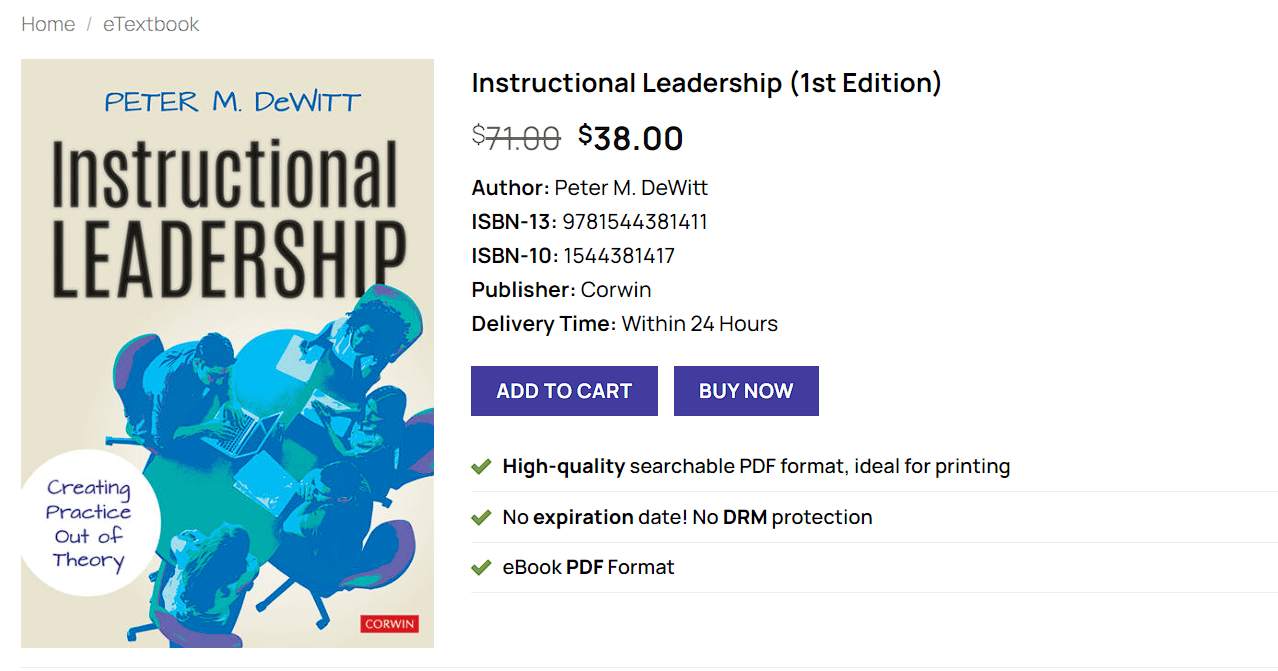Instructional Leadership 1st Edition is a pivotal concept within the educational landscape, signifying the strategic efforts of school leaders to improve teaching and learning. Fundamentally, instructional leadership involves guiding and influencing educators to enhance their instructional practices, ultimately fostering better student outcomes and a positive school culture. This form of leadership is distinct from traditional educational leadership, which may focus more broadly on administrative and operational aspects of school management.
The role of instructional leadership is multifaceted and includes setting clear educational goals, supervising curriculum implementation, and providing professional development for teachers. Effective instructional leaders are adept at creating a collaborative environment where teachers feel supported and are encouraged to innovate and improve their teaching methods. This, in turn, cultivates an atmosphere of continuous improvement within the school, positively impacting school culture and student achievement.
The historical context of instructional leadership reveals its evolution from a primarily managerial role to one that emphasizes the importance of pedagogical expertise and instructional quality. Early theories of educational leadership often centered on organizational management and operational efficiency. However, as research increasingly highlighted the direct correlation between leadership practices and student performance, the focus shifted towards instructional leadership. This shift underscored the importance of leaders being deeply involved in the core business of schools—teaching and learning.
In contemporary educational settings, instructional leadership is recognized as a critical factor in driving school success. By prioritizing teaching and learning, instructional leaders help to create a cohesive vision and mission that aligns with the school’s educational objectives. They play a key role in shaping a conducive learning environment, setting high expectations, and ensuring that both teachers and students have the necessary resources and support to excel. As educational challenges continue to evolve, the principles of instructional leadership remain central to the pursuit of excellence in schools.
Key Concepts and Principles of Instructional Leadership
Instructional leadership is pivotal in shaping the educational experiences and outcomes within schools. At its core, it revolves around several foundational principles that guide leaders in fostering an environment conducive to learning and growth. One of the primary tenets is the establishment of clear, measurable goals. These goals provide a roadmap for both teachers and students, ensuring that everyone is aligned with the school’s vision and mission.
Another critical principle is the emphasis on professional development. Continuous learning opportunities for educators are essential to keep their skills and knowledge up-to-date. Effective instructional leaders prioritize and facilitate professional development programs, workshops, and peer collaboration sessions. These initiatives not only enhance teachers’ competencies but also positively impact student achievement.
Data-driven decision-making is another cornerstone of instructional leadership. By systematically collecting and analyzing data, leaders can make informed decisions that address specific needs within the school. This approach helps in identifying areas of improvement, monitoring progress, and implementing strategies that are evidence-based. For example, analyzing student performance data can highlight gaps in learning, prompting targeted interventions and support.
Building collaborative learning communities is also fundamental. Collaborative environments encourage sharing of best practices, collective problem-solving, and mutual support among educators. Instructional leaders play a crucial role in fostering such communities by promoting teamwork and creating structures that facilitate collaboration, such as professional learning communities (PLCs) and cross-disciplinary teams.
Reflective practice and continuous improvement are integral to effective instructional leadership. Leaders must regularly reflect on their practices, seek feedback, and be willing to make adjustments. This iterative process of reflection and improvement ensures that the leadership strategies remain relevant and effective in addressing the evolving needs of the school community.
In conclusion, the principles of Instructional Leadership 1st Edition encompass setting clear goals, fostering professional development, promoting data-driven decision-making, building collaborative learning communities, and embracing reflective practice. By adhering to these principles, instructional leaders can create a positive, impactful educational environment that supports both teacher and student success.

